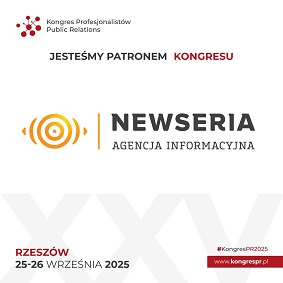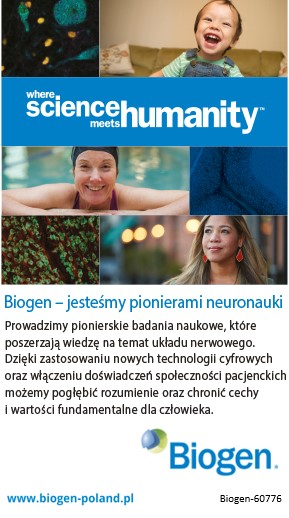Electrolyte Solvent DMC Market Forecast: USD 4,218 Million, Growing at 8.8% CAGR by 2035 | Fact.MR Report
Electrolyte Solvent Dimethyl Carbonate Market Accelerates with Growth in Lithium-Ion Battery Production: Expanding EV Industry Fuels Material Demand.
ROCKVILLE, MD, UNITED STATES, May 21, 2025 /EINPresswire.com/ -- According to Fact.MR, a market research and competitive intelligence provider, the electrolyte solvent dimethyl carbonate market was valued at USD 1,688 Million in 2024 and is expected to grow at a CAGR of 8.8% during the forecast period of 2025 to 2035.Dimethyl carbonate constitutes an essential electrolyte solvent for lithium-ion batteries because of high electrochemical stability coupled with a low viscosity and good dielectric constant. The above attributes provide for quick ion transport and better performance of the batteries, hence making DMC indispensable in hyperelectric vehicles, portable electronics, energy storage systems, etc. The chemical versatility that DMC possesses also makes it an intermediate for the synthesis of drugs, polycarbonates, and agrochemicals, adding to its industrial significance.
At the commercial level, increasing demand for DMC stands very much in step with accelerated switches toward clean energy and electric mobility. Now with worldwide automotive manufacturers accelerating their EV production and governments enforcing strict carbon credit emissions targets, Lithium-ion batteries consumption, and hence DMC, are on the rise; this precipitated a rise in investments into the battery manufacturing facilities and chemical supply chains, particularly in Asia-Pacific markets such as China, South Korea, and Japan. Moreover, its greener production routes compared to those of conventional solvents make it more attractive in the sustainability-driven market.
One of the major driving factors for the dimethyl carbonate electrolyte solvent market is the expansion of the electric vehicle industry. Increasing demand for high-performance lithium-ion batteries, promoted by global electrification targets and ongoing integration of renewable energy sources, shall provide steady opportunities for DMC manufacturers.
For More Insights into the Market, Request a Sample of this Report:
https://www.factmr.com/connectus/sample?flag=S&rep_id=10763
Key Takeaways from Market Study
The electrolyte solvent dimethyl carbonate market is projected to grow at 8% CAGR and reach USD 4,218 million by 2035, The market created an absolute $ opportunity of USD 2,403 million between 2025 to 2035
North America is a prominent region that is estimated to hold a market share of 17% in 2035, North America is expected to create an absolute $ opportunity of USD 364 million
“Rising demand for electric vehicles, growing reliance on high-energy-density lithium-ion batteries, and the proliferation of renewable energy storage systems—combined with increasing industrial focus on sustainable and efficient electrolyte formulations—will drive the electrolyte solvent dimethyl carbonate market.” says a Fact.MR analyst.
Leading Players Driving Innovation in the Electrolyte Solvent Dimethyl Carbonate (DMC) Market:
Key players in the electrolyte solvent dimethyl carbonate industry include Asahi Kasei Corporation, Connect Chemicals, Dongying City Longxing Dongying Hi-tech Spring Chemical Industry Co., Ltd., Kishida Chemical Co., Ltd. Kowa American Corporation, Lotte Chemical Corporation, Merck KGaA Mitsui Chemicals, Inc., Shandong Feiyang Chemical Co., Ltd., Shandong Wells Chemicals Co., Ltd., SMC Global, Tangshan Chaoyang Chemical, ThermoFisher Scientific (Alfa Aesar), and Ube Industries, Ltd. among others.
Market Development
With chemical producers partnering with battery-makers and other stakeholders of the EV supply chain in ongoing efforts to optimize electrolyte formulations, the dimethyl carbonate solvent market witnessed growing development. The market introduced high-purity variants of DMC for next-generation lithium-ion batteries with ionic conductivity, thermal stability, and green synthesis activities considered to be of paramount importance. Mitsubishi Chemical, Shandong Shida Shenghua, and Lotte Chemical are several companies actively working toward expanding capacity for large-scale plants and implementing joint ventures to meet demand that complies with battery-grade quality standards.
From the side of manufacturers, greener processes for producing DMC using carbon dioxide as a feedstock are being explored in an attempt to mitigate sustainability concerns that promote more environmental regulations. Import dependence can be addressed through localized production, especially across North America and Europe for better service for battery and EV manufacturers. Simultaneously, solvent synthesis-based companies have also utilized AI along with an underpinning technology, digital twins, for solving issues and optimization of solvent synthesis processes in real time. Predictive analytics has further been integrated, allowing swift quality assurance, lesser wastage, and quicker market launch of new solvent grades, thus making a statement about the environmental-friendly drive of this industry.
For example, in November 2024, Jiangsu Sailboat Petrochemical began commercial operations of a new carbonates plant in Lianyungang, China, employing Asahi Kasei’s proprietary technology. The facility produces high-purity ethylene carbonate (EC) and dimethyl carbonate (DMC) from carbon dioxide (CO₂), promoting sustainable production methods for advanced lithium-ion battery electrolyte components.
Get Customization on this Report for Specific Research Solutions:
https://www.factmr.com/connectus/sample?flag=S&rep_id=10763
Electrolyte Solvent Dimethyl Carbonate Industry News:
In June 2023, Merck expanded its production capacity for highly purified reagents at its facility in China. This investment aims to support large-scale manufacturing of high-purity reagents used in quality control and testing, addressing the growing demands of the biopharmaceutical industry.
In October 2021, UBE introduced Daxsol dimethyl carbonate, a product recognized for its biodegradability and low toxicity. It is widely used by engineers in adhesives, cleaning solutions, and coatings, offering a sustainable alternative that meets industry requirements.
Check out More Related Studies Published by Fact.MR:
The global halogenated solvent cleaner market was valued at US$ 885.3 million in 2023 and has been forecasted to expand at a CAGR of 3.4% to end up at US$ 1.28 billion by 2034.
The global coating solvent market is valued at $10.02B in 2024 and is set to reach $15.41B by 2034, growing at a 4.4% CAGR, per Fact.MR's report.
About Us:
Fact.MR is a distinguished market research company renowned for its comprehensive market reports and invaluable business insights. As a prominent player in business intelligence, we deliver deep analysis, uncovering market trends, growth paths, and competitive landscapes. Renowned for its commitment to accuracy and reliability, we empower businesses with crucial data and strategic recommendations, facilitating informed decision-making and enhancing market positioning.
Contact:
11140 Rockville Pike
Suite 400
Rockville, MD 20852
United States
Tel: +1 (628) 251-1583
Sales Team: sales@factmr.com
Follow Us: LinkedIn | Twitter | Blog
S. N. Jha
Fact.MR
+ +1 628-251-1583
sales|factmr.com| |sales|factmr.com
Legal Disclaimer:
EIN Presswire provides this news content "as is" without warranty of any kind. We do not accept any responsibility or liability for the accuracy, content, images, videos, licenses, completeness, legality, or reliability of the information contained in this article. If you have any complaints or copyright issues related to this article, kindly contact the author above.
Martinique’s Iconic Tour des Yoles Returns This Summer
EA Therapeutic Health Receives $20,000 Grant from The Hartford
A' International Photography and Photo Manipulation Design Awards Call for Entries
Więcej ważnych informacji
 Jedynka Newserii
Jedynka Newserii

 Jedynka Newserii
Jedynka Newserii

Handel

Komisja Europejska chce wprowadzić ujednolicone przepisy dotyczące wyrobów tytoniowych. Europosłowie mówią o kolejnej nadregulacji
Ministerstwo Zdrowia opracowało nowy projekt przepisów wprowadzających kolejne zakazy dotyczące wyrobów tytoniowych – całkowitą eliminację e-papierosów oraz zakaz aromatów w woreczkach nikotynowych. Najprawdopodobniej w ciągu kolejnych dwóch–trzech lat Polska będzie musiała implementować nową dyrektywę dotyczącą wszystkich produktów tytoniowych, nad którym niebawem ma rozpocząć prace Komisja Europejska. Europosłowie mówią o ryzyku chaosu legislacyjnego, nadregulacji i wskazują na zagrożenia związane z proponowaną podwyżką akcyzy.
Konsument
Za trzy miesiące ruszy w Polsce system kaucyjny. Wątpliwości budzą kwestie rozliczeń i podatków

Zaledwie trzy miesiące zostały do startu systemu kaucyjnego w Polsce. Kaucje obejmą szklane i plastikowe butelki oraz puszki z napojami. To duża zmiana dla producentów napojów, sklepów i konsumentów oraz pośredniczących w zbiórce operatorów systemów kaucyjnego. Na razie przepisy są na tyle niedoprecyzowane, że budzą wiele wątpliwości w kwestii rozliczania podatków czy rozliczeń z operatorami. Producenci będą musieli płacić podatek od niezwróconych butelek, co zwiększy ich koszty.
Transport
Rośnie skala agresji na polskich drogach. Problemem jest nie tylko nadmierna prędkość, ale też jazda na zderzaku

Za kilka dni zaczynają się wakacje, czyli statystycznie najniebezpieczniejszy czas na drogach. Wśród głównych przyczyn takich zdarzeń na prostych odcinkach drogi są nadmierna prędkość i jazda na zderzaku. Zarządca autostrady A4 Katowice–Kraków w ramach kampanii „Nie zderzakuj. Posłuchaj. Jedź bezpiecznie” zwraca uwagę na zjawisko agresji na polskich drogach i przypomina, że bezpieczeństwo zaczyna się od osobistych decyzji kierowcy.
Partner serwisu
Szkolenia

Akademia Newserii
Akademia Newserii to projekt, w ramach którego najlepsi polscy dziennikarze biznesowi, giełdowi oraz lifestylowi, a także szkoleniowcy z wieloletnim doświadczeniem dzielą się swoją wiedzą nt. pracy z mediami.










.gif)

 |
| |
| |
|